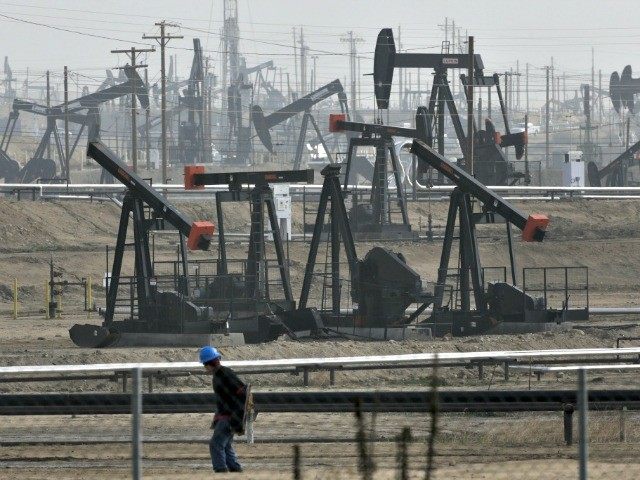Despite $225 billion in secured debt and prices collapsing by 55 percent, the oil fracking industry continues to boom due to rapidly increasing productivity.
When commodity extraction markets crashed in the past, the underlying industries have suffered huge waves of liquidations and bankruptcies. Wall Street analysts have been predicting that October 2015 would see at least a 15 percent cut in bank lending to the U.S. oil fracking industry.
But according to a report by bank analysts at Jeffries & Co., total lending to the sector has only been trimmed by $450 million. Banks in this cycle seem willing to kick the can down the road, rather than create chaos by foreclosing on good companies suffering from the commodity price crash.
Breitbart News reported on September 21 that the fracking industry’s disruptive technology continues to improve productivity faster than prices have been falling. Fracking well technology advances have been doubling oil well production every two years, from less than 50 barrels a day in 2009 to over 400 barrels today.
The pace of productivity improvement in the fracking industry is analogous to the computer industry’s “Moore’s Law,” which expects the speed of processing chip to double every 2 years.
The initial oil production from fracked wells has improved by over 800 percent in just six years. But what is not understood by most analysts is that the decline in oil production in fracked wells has fallen by 80 percent over the same period. In 2009, production from fracked wells fell from 50 barrels a day to 25 barrels per day in 6 months, and was not commercially viable after one year. But wells fracked in Texas’ Eagle Ford region in 2014 production only fell from 400 barrels a day to 250 after six months, and the wells are expected to continue to be commercially viable for 4 years.
This Moore’s Law-like tech driven productivity improvement explains why U.S. oil production has continued to remain high despite the U.S. price of oil falling to $45 a barrel over the last 15 months (about a 55 percent price decline). That is even more impressive, given that the number of oil rigs running in the U.S. fell from a peak of about 1,600 a day in October 2014 to about 675 today, a 58 percent decline in operating rigs.
Jonathan Wolff, who follows the banks at with Jeffries, told SNL, “We think that banks are generally giving producers more time to improve financial health and that spring ’16 redeterminations could be much tougher without significant commodity price improvement”.
Jefferies sees most of the risk associated with financing the fracking industry will fall on junk bond investors that lent about $200 billion to the shale fracking industry on an unsecured basis. But virtually all the junk bond issues to the top 25 companies in the industries have debt maturities that are far out in the future, giving the industry years to continue productivity improvements or restructure debt into equity.
With productivity increasing, Moody’s Investors Service sees the contraction as too little to make a significant dent in the global supply gut. The ratings agency cut its forecasted oil price for 2016 to just $48 per barrel in 2016, $55 per barrel in 2017 and $63 per barrel in 2018. The company told the Aramco FuelFix blog that “resilient U.S. production that’s still sending large amounts of oil to market despite large cutbacks in investment and drilling.”
“Although capital spending has dropped substantially and the U.S. rig count has declined by more than half, U.S. production has only recently begun to decline,” Moody’s analysts wrote in their analysis. “Moreover, Saudi Arabia and Russia have both increased production to their highest levels since the early 1990s.”
The price of oil adjusted for inflation over the last 140 years averaged $30 a barrel; since 1946, it has averaged $42 a barrel; since 1980, it averaged $53 a barrel, and from 2000, it averaged $64.50 a barrel.

COMMENTS
Please let us know if you're having issues with commenting.